Acoustic fabric has changed over the years. We have added new and current thinking. Updated on October 18, 2019
Last week I was asked the following question in our weekly Google Hangout “I know you hate to use the word best but I’m going to use it anyway. What is the best acoustic panel fabric? All fabrics restrict airflow. You must choose the proper fabric type.
Well, there are companies that make acoustical fabrics. What we use here in our studio and our product line is Guilford of Maine. I would highly recommend them. They have a complete line of acoustical fabrics and they deserve the name acoustical fabrics because they actually developed the fabric to let air pass through it and we know from our past videos and our past explanations that middle and high-frequency absorption occurs at the molecular level.
Our Acoustic Fabric Supplied by Guildord of Maine: https://www.guilfordofmaine.com/acoustic.
We need molecular speed, we need air movement in order to create friction and in order to create heat to cause absorption to happen. So with an acoustic fabric, we’re not trying to absorb energy. We’re trying to let energy or air pass through the material into the sound-absorbing material that’s on the other side. Let’s be honest fabric is there to make something look nicer than it is because we all like things to look nice.
- Acoustic Fabric Guilfod of Maine – Auster
- Acoustic Fabric Guilfod of Maine – Block Party
- Acoustic Fabric Guilfod of Maine – Birdseye
Acoustic Fabric Is A Cosmetic Application
Fabric is really a cosmetic application. If I had my way I wouldn’t use it at all because it does restrict performance, up to 10 percent in some cases, but the sound-absorbing materials that we use today aren’t that pretty, even foam to me is not that pretty, so acoustic panel fabric does have its place.
We cover things up to make them pretty. Now if we cover them up we have to cover them up in such a way that we do not restrict the air movement across their surfaces. So Guilford of Maine has a whole line of acoustically transparent fabrics. So what does that mean? It’s a little bit misleading. They subject the fabrics to an air permeability test. They start by measuring the amount of air on one side, they move the air through the fabric and then they measure the amount of air that comes through on the other side. They have to have more than ninety percent returned for it to pass the test.
Air Permeability: https://www.aticorporation.com/air-permeability.html
If they have 100 percent air on one side they better have ninety percent of that air coming through on the other side, and there’s your difference. You know you’re going to get a little bit of restriction on the airflow with some fabrics being 95, some fabrics 97. I don’t quite understand how all that can be, how you can get almost a hundred percent of the air through one side to the other? Well when a test is conducted by a reputable company such as Guilford of Maine, who has been in business for years, I’m inclined to believe them. Their fabrics pass the test.
Their acoustic panel fabric is used extensively in the acoustical world. They have a whole new line of really nice fabrics. However they’re not cheap, they can be $20, $30, $40 a yard so you have to be cognizant of that in your budget.
- Acoustic Fabric Guilfod of Maine – Bix
- Acoustic Fabric Guilfod of Maine – Axiom
- Acoustic Fabric Guilfod of Maine – Anchorage
- Acoustic Fabric Guilfod of Maine – Basketweave
Installing Acoustic Fabric Is Key To Performance
Secondly, you have to be very cognizant of the way you install the fabric. A lot of companies will just wrap the fabric around the sound-absorbing material. We don’t subscribe to that and don’t believe it as our test results show that fabric right next to a sound-absorbing material is not the best way to create sound absorption and let all the energy pass through.
We have air spaces between our fabric and our foam. We have spaces in our fabric and any other sound-absorbing material that we use when we design rooms. So we want to allow for the air to move through the fabric and strike the surface of the sound-absorbing material behind it and we like air spaces between our fabric and choice of material that we use.
It makes a bad situation better, a bad situation meaning that covering something that’s supposed to be sound absorbing is not a good idea, to begin with. You should just have the raw surface exposed to the air movement. That said we realize that people have the need for appearance and niceties along those lines so it’s a little bit of a trade-off. Are we willing to trade-off less absorption for a nicer look? It seems to be the case today.
In Summary
If you would like your room acoustic issues analysed for free by me then please fill in the form here and I will be happy to take a look for you.
Thanks
Dennis



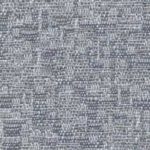
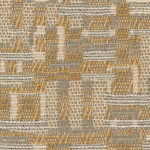
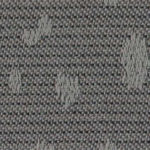
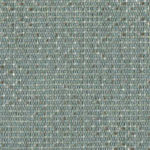
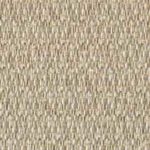
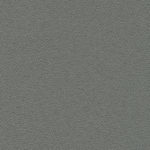
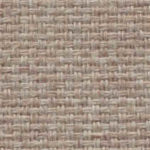





Greetings!
My name is Claudiu, i’m from Romania and i was reading your article today. Thank you for it. :-) Can i ask you a few questions please?
I want to make a Sound Healing Studio (not recording studio) , a place where clients or small groups of 2-3 person to come for a great sound experience. I have musical instruments such as Hang (aka hang drum) , Tibetan singing bowls and Gong. Sound frequencies generated are between 70 Hz and 1.5 Khz. My room is 5,50 meters long by 4,50 meters width by 3,80 height. The walls are from brick. One wall having 2 long windows (2,70 m long x 1 m width). The opposite wall is a fake gipscarton wall – 10 cm to brick wall – so it’s preatty absorbant area. There are quite long late reflections because of the big size of room (a little long and a little messy sound ) My question is, how do you think i could have better acoustics? (Natural sound reinforcement and and sound diffusion) My possition when playing music would be close to the fake wall, opposite to windows.
1. having marble big panels on walls to reflect sound + sound absorbers in corners + some diffusers on walls and ceiling?
2. having only diffusers and absorbers?
3. any suggestions? :-)
I would be very much grateful for any advise. Thank you very much! :-)
Claudiu
Hi Claudiu,
Your room size is too small for drums of any kind. Drums produce low frequency energy your room can not handle due to its size and volume. You must get the low end managed as best you can before you deal with middle and high frequencies through the use of diffusion.
Glass produces a middle and high frequency response change that you do not want anywhere near a microphone.
If you want to discuss this further Go to http://www.bookedin.net/acoustic-fields-1 and schedule a time slot to speak.
Dennis
I use a brand called ‘Soundhush’ acoustic panels but these are more for my personal band room area. They look good and work well but since then I need something which can deal with impact resistance and sound absorption panels. I’m on a community hall committee and we rent out our hall for both sports and speaking events, therefore noise reverberation needs to be minimal for both.
Would you recommend any materials which are good for impact and sound absorbing panelling?
C, The treatment technology you would require is based on room size/volume/pressure levels. You have to have numbers to measure the forces you are trying to treat. Everything else is just a guess. Once you have the numbers, then you can select the appropriate treatment technology and design from that point to include certain surfaces that will stand the impact of objects. Fill out the information in this link and let’s take a look at all the variables. https://www.acousticfields.com/free-room-analysis/
I am trying to buy fabric for my mineral stonewool to make acoustic panels for my home theater, but i am located in europe, Republic of Georgia to be exact and there are not any reputable brands here who sell acoustic fabrics. How do i buy what i need from regular textile shop? thank you.
Z, The only company that we have tested to meet our requirements is Guilford Of Maine.